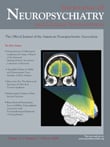To the Editor: Huntington’s disease is a hereditary brain disorder that affects people of all races, all over the world. Until quite recently, little was known about Huntington’s disease. Yet in the last 20 years, much has been learned about the causes and effects of Huntington’s disease and about therapies and techniques for managing the symptoms.
Huntington’s disease is a degenerative disease whose symptoms are caused by the loss of cells in the basal ganglia. This damage to cells affects cognitive ability (thinking, judgment, and memory), movement, and emotional control. Symptoms appear gradually, usually in midlife, between the ages of 30 and 50 years old. However, the disease can strike young children (juvenile form) and the elderly.
1Despite the vast research on the anatomy and physiology of the basal ganglia, there is little agreement on the exact role the basal ganglia play in the behavior and motor control. While numerous models of basal ganglia have been proposed, few are computational in nature; thus, very few simulations of basal ganglia exist for testing the hypotheses and comparing the results to neurological and psychophysical data. The lack of computational models may, however, be partly due to the complexity of basal ganglia anatomy, multiplicity of physiological responses, and subtleties of behavioral responses.
2We believe that the mathematical models of brain physiological performance have a great role in elucidating medical knowledge and have expanded our attitude about the illness states. The increase in effectiveness of mathematical models is manifested by two factors: the complexity of brain structure itself and greater complexity of pathological conditions. Certain neurological disorders such as Huntington’s disease have a particular importance and have gained the attention of many researchers.
3We have implemented a computational model for gait disorder to show how
GABA level variation and glutamate toxicity can cause the disease.
1,
4 Then, in a new unpublished research, we tried to introduce a perfect model, based on recordings taken from Huntington’s disease patients.
5 This study shows the effect of changing neurotransmitters on movement symptoms of Huntington’s disease. We have considered most available physiological information about neuron basic features and basal ganglia.
Basal ganglia are formed of some main parts, each of which is formed from many neurons that work together to do their job (i.e., control of movement). Similarly, our model has blocks that are formed in the same arrangement. In addition, the relation between blocks is modeled by proper gains, and inside each neuronal block we have put a related mathematical model. Each block has a threshold, firing rate, and a first order transfer function which simulates the neuron membrane.
Our model was able to simulate the physiological behavior of basal ganglia in Huntington’s disease. In order to find out an effective new treatment, we ran our model with different amounts of gains (i.e., neurotransmitter amounts). Two important finding was obtained:
1. Decreasing the level of glutamate to half its normal level reduces movement disorders.
2. Increasing GABA, together with increasing threshold, also decreases movement disorders.
We propose that these two comments may be a good introduction to help ameliorate Huntington’s disease, though experimental research is needed to validate our hypotheses.

